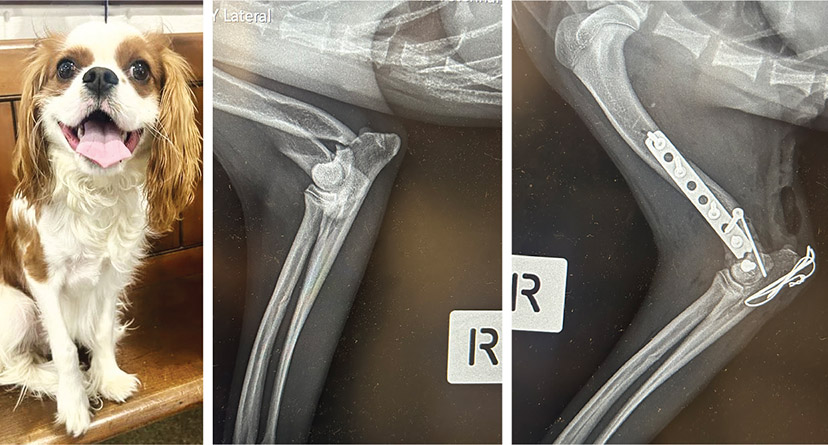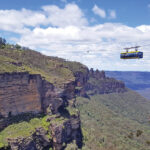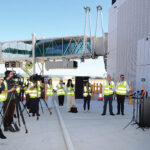By Kellie Tickner, Orchard Hills Veterinary Hospital Administrator
AT just nine months old, Archie, a Cavalier King Charles Spaniel, has already faced several trips to the vet due to his adventurous spirit. His latest escapade, however, resulted in a significant injury. Whilst attempting a leap toward the stairs on his family’s deck, Archie misjudged the jump and collided with the steps, causing a spiral fracture in his right front leg’s distal humerus.
Archie was rushed to Orchard Hills Veterinary Hospital (OHVH), where he was assessed by Dr. Jonathan. Pain relief was quickly administered, and after a thorough examination, Archie was placed under general anaesthesia for diagnostic X-rays. The X-rays confirmed a severe fracture that required urgent surgical repair.
To stabilise Archie’s leg, a cast was applied, and arrangements were made for Dr. Neil, OHVH’s visiting orthopaedic surgeon, to perform surgery. A complex five-hour procedure was carried out to repair Archie’s leg using multiple pins, screws, plates, and K-wires, saving his leg and giving him the best chance at a full recovery.
Diagnosing Fractures in Dogs
Fractures in dogs are often very painful, and they usually cannot bear weight on the affected limb. Swelling, bruising, and limping are common signs. Veterinarians diagnose fractures through a combination of a physical exam and radiographs (X-rays). By gently feeling the injured area, vets can detect pain, swelling, and even a grinding sensation between the broken bones.
X-rays are crucial for confirming the fracture, determining its severity, and planning the surgical repair. They allow veterinarians to visualise the broken bones and assess the best way to rejoin them. Post-surgery, follow-up X-rays are used to ensure that the bones have been correctly aligned and to monitor the placement of any surgical implants, such as pins or plates.
Post-Operative Care
Post-surgery care is essential for a smooth recovery. Archie required strict monitoring for several days after his operation, to ensure there was no complications, such as infection or movement of the implants. His leg was bandaged to provide additional support and restrict movement of his leg.
When Archie returned home, his family was given detailed instructions to limit his activity, which was challenging given his energetic nature. He required strict cage rest for the first several days to protect his healing leg. As his recovery progresses, physical activity will be gradually reintroduced to prevent muscle loss and reduce the risk of long-term joint stiffness.
Long-Term Prognosis
Most fracture repairs, like Archie’s, are highly successful, with many dogs returning to normal activity levels within three to four months. However, fractures involving joints may result in some long-term stiffness or arthritis. Archie’s prognosis is excellent, and with ongoing care and gradual rehabilitation, he is expected to make a full recovery.
Thanks to the skilled team at OHVH and his family’s dedication to his recovery, Archie will soon be back to his adventurous self, though hopefully with a bit more caution in future leaps!
Contact the friendly team at Orchard Hills Veterinary Hospital on 4736 2027 for all your pet care needs.






